Entry 3 Day 14 15 October Altitude: 0 ft Distance: 13,738 km Speed: 0 knots/hr
We’ve arrived in Antarctica…
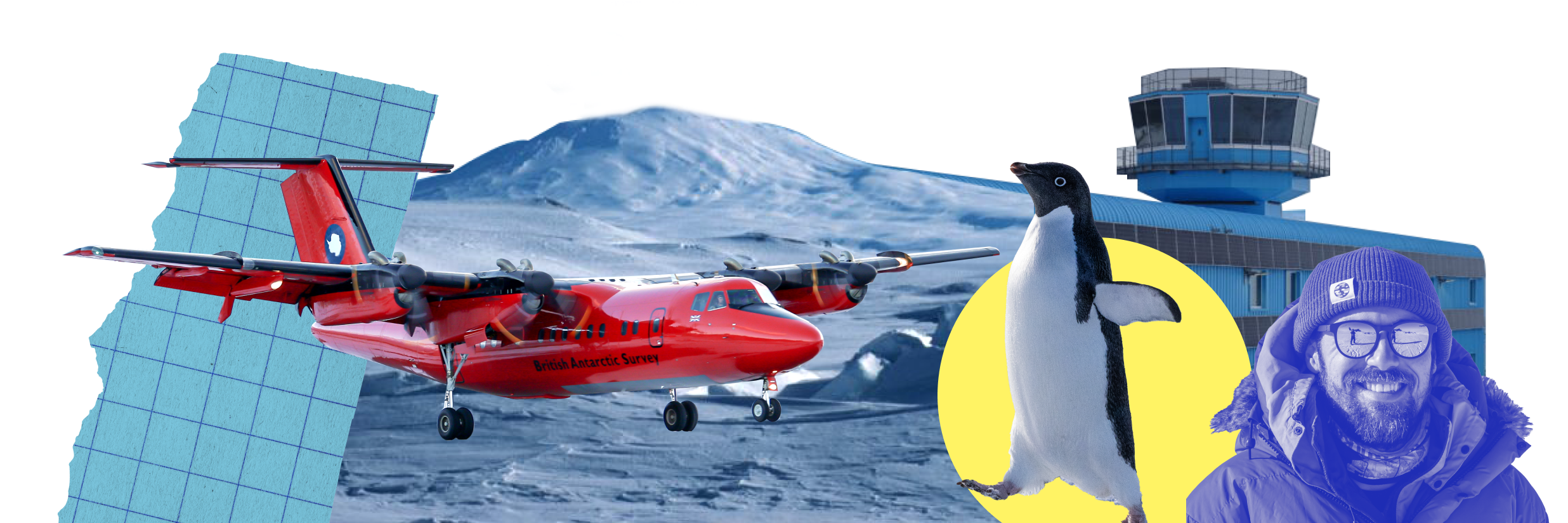
… and so have your names! We’ve flown a whopping 8,000 miles, all the way from Canada to the Antarctic continent. We’ve crossed mountain ranges, tropical islands, lush rainforests, vast deserts and the freezing Southern Ocean.
Before we get stuck into life as an Antarctican, let’s see what that landing at Rothera Research Station looked like from inside a Twin Otter plane.
Not a bad view from the plane window!
Travelling through South America
You’ve got mail: the flight team have sent you more fantastic photographs from their journey down through Chile. To get to Antarctica, you travel all the way down to the very tip, to the windy city of Punta Arenas. On the way they enjoyed the warm weather, the spectacular green vistas, and some fun local restaurants – there won’t be any of these in Antarctica!

Pester the pilots
Why is the plane red? How do you land on skis? Are there sharks in the sea around Antarctica? You asked, and our flight team answered. Vicky, Olly, Tom and Jeremie put on their thinking caps to answer as many questions as they could about life as a polar pilot.
Did they answer your question?
Welcome to Rothera Research Station, Antarctica
Your names have officially made it to the Antarctic continent. We’ll update you about this next week!
Rothera Research Station can be found on Adelaide Island, just off the west coast of the Antarctic Peninsula. It’s our largest research station – home to more than 100 people in the summer months – and is a hub for biological research. It’s also the first stop on an Antarctic journey for scientists heading deeper into the continent.
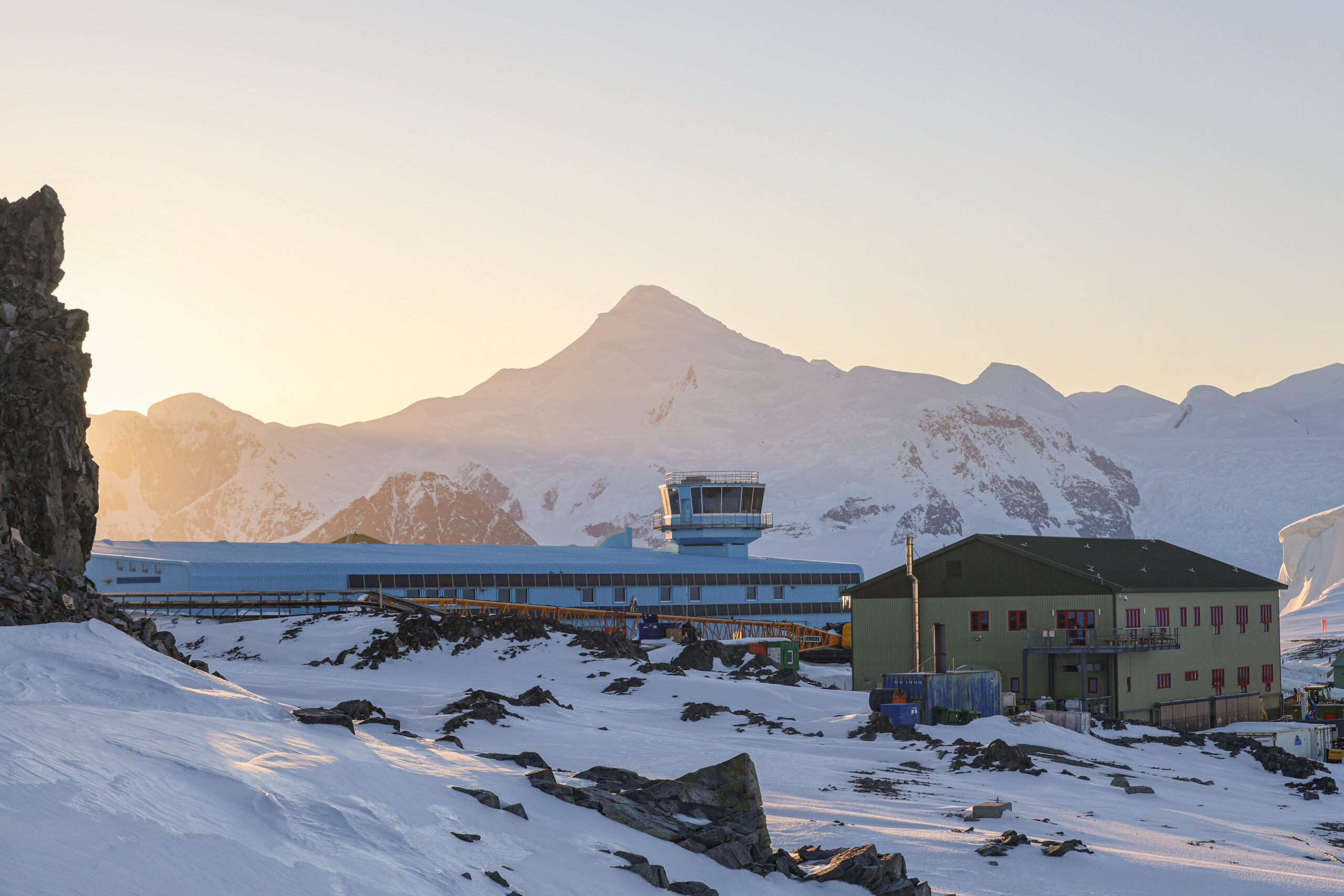
Rothera Research Station looking lovely in the rising sun (Matt Hughes)
Aurelia Reichardt is the Station Leader at Rothera Research Station. She describes what it’s like flying into the station…
I’ve worked here for many seasons, so when I arrive it feels like coming home. You start seeing the icebergs as you approach the peninsula from the north, and then you spot the continent. You see mountains covered in white, glaciers, and the sea. Depending on the time of year, the sea is extremely blue – an amazing cyan blue – because the plankton bloom hasn’t started yet. You can’t actually see the station at first because the scale of the landscape dwarfs it. But then you recognise the mountain ridges and then – all of a sudden – you can see our tiny, tiny station.
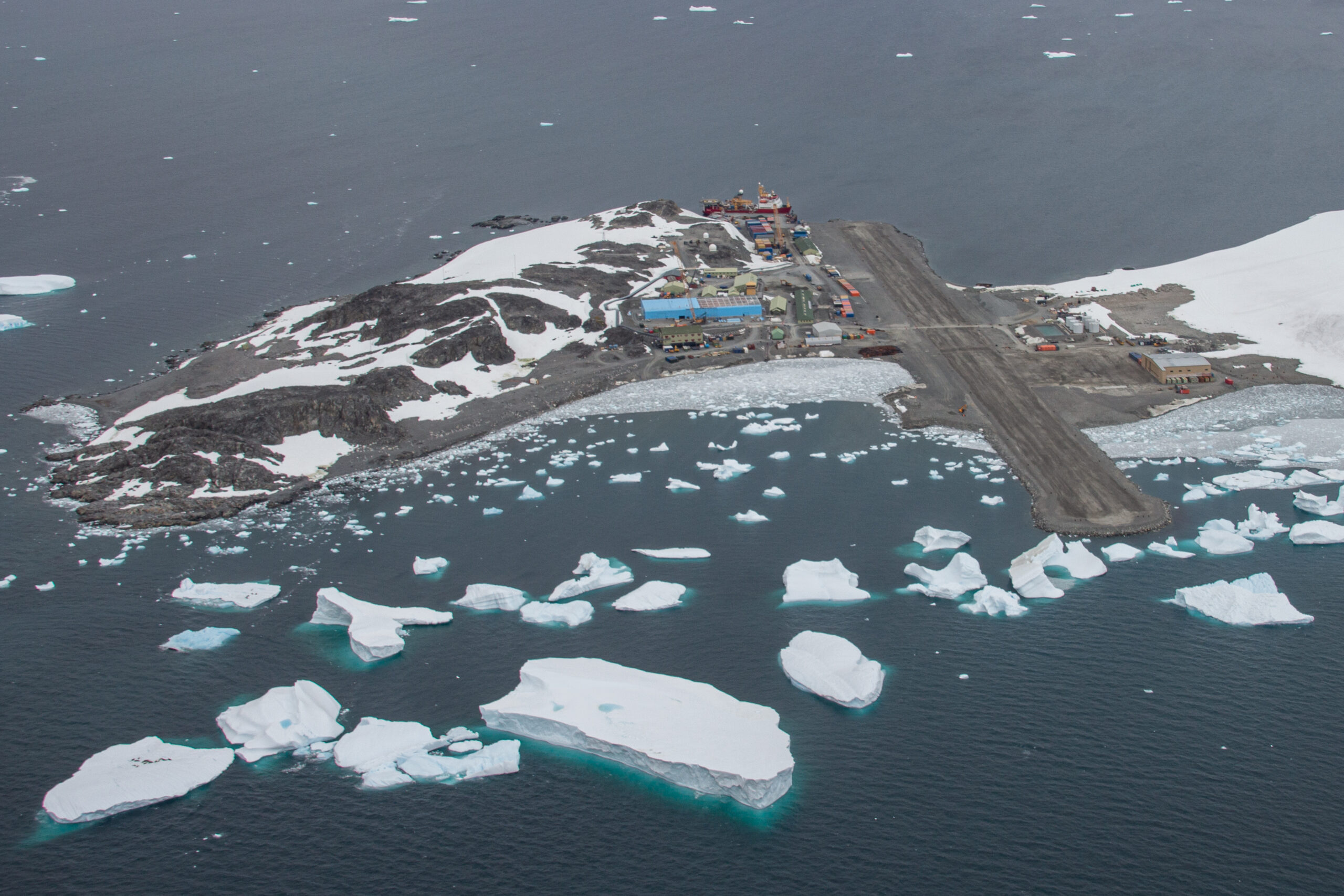
Rothera Research Station from above
First things first – we need to learn some cool facts about this magical place.
Antarctica is a desert. In fact, it’s the biggest desert in the world. When we think of a desert, we normally picture vast expanses of sand under a boiling hot sun. But a desert is actually an area of land that receives a very small amount of rain or snow.
Antarctica is very icy. Well of course, but we mean very icy. Scientists think less than 1% of the continent is free from ice. This also makes Antarctica the largest ice sheet in the world.
There are many lakes in Antarctica. Hidden under the ice sheet, there are more than 400 lakes (called subglacial lakes).
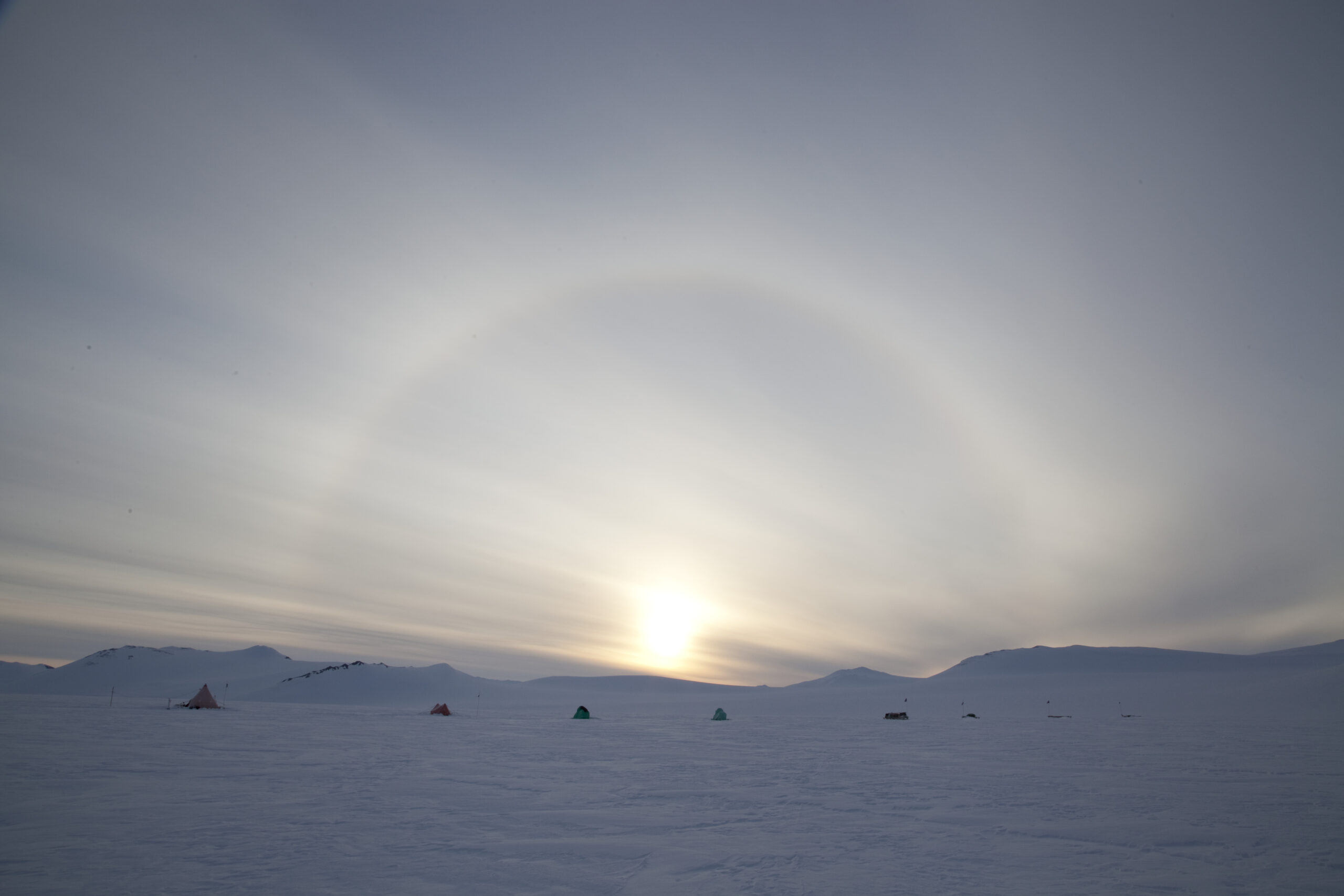 Caspar McKeever
Caspar McKeever 
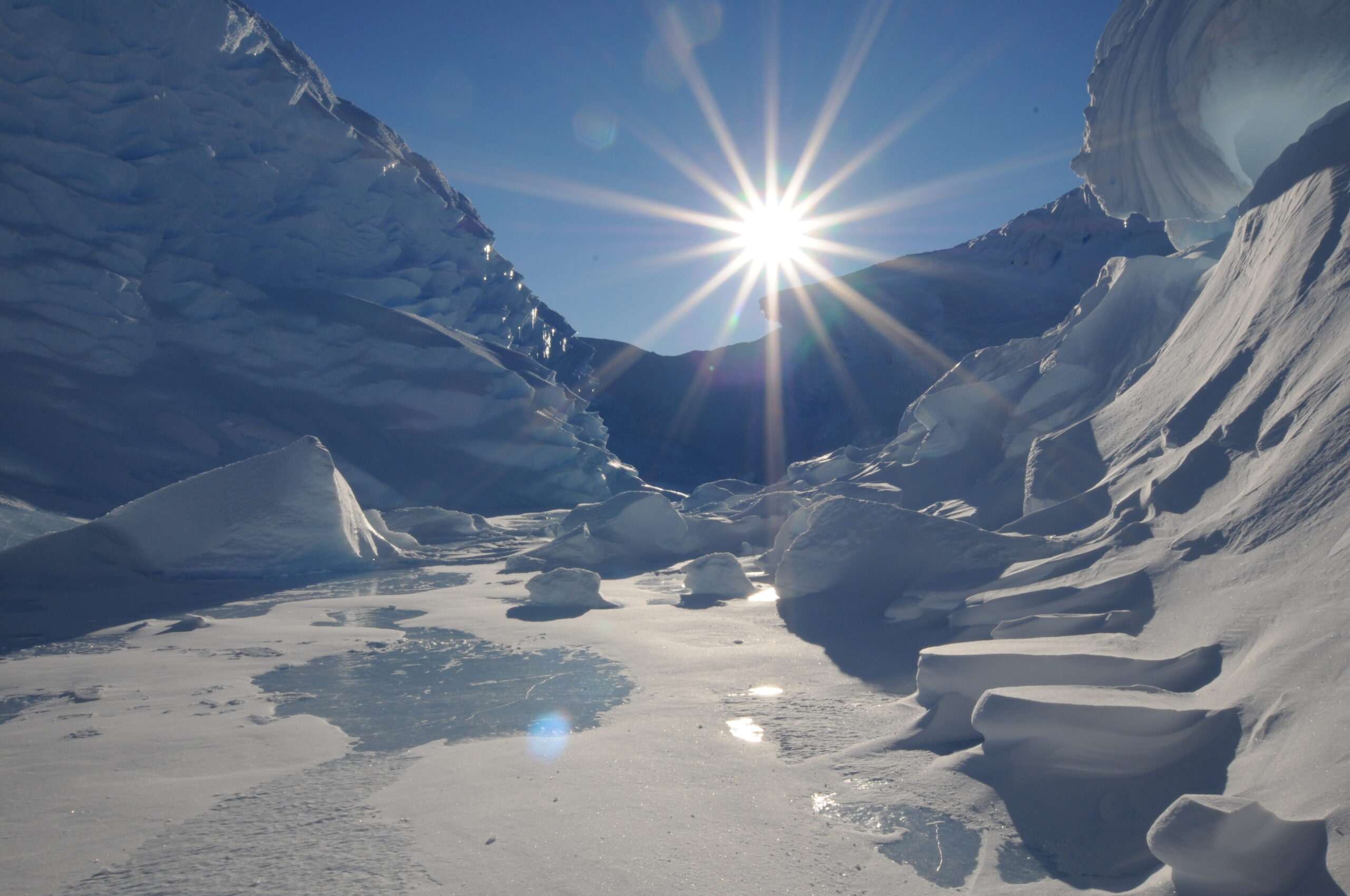 Michael Ramage
Michael Ramage Meet Matt Hughes
Matt is the Tower Operations Supervisor at Rothera Research Station. He tells us a bit about a day in his life, his office view and how he ended up working in Antarctica.
Matt at the Holth Peaks helping to collect a science team

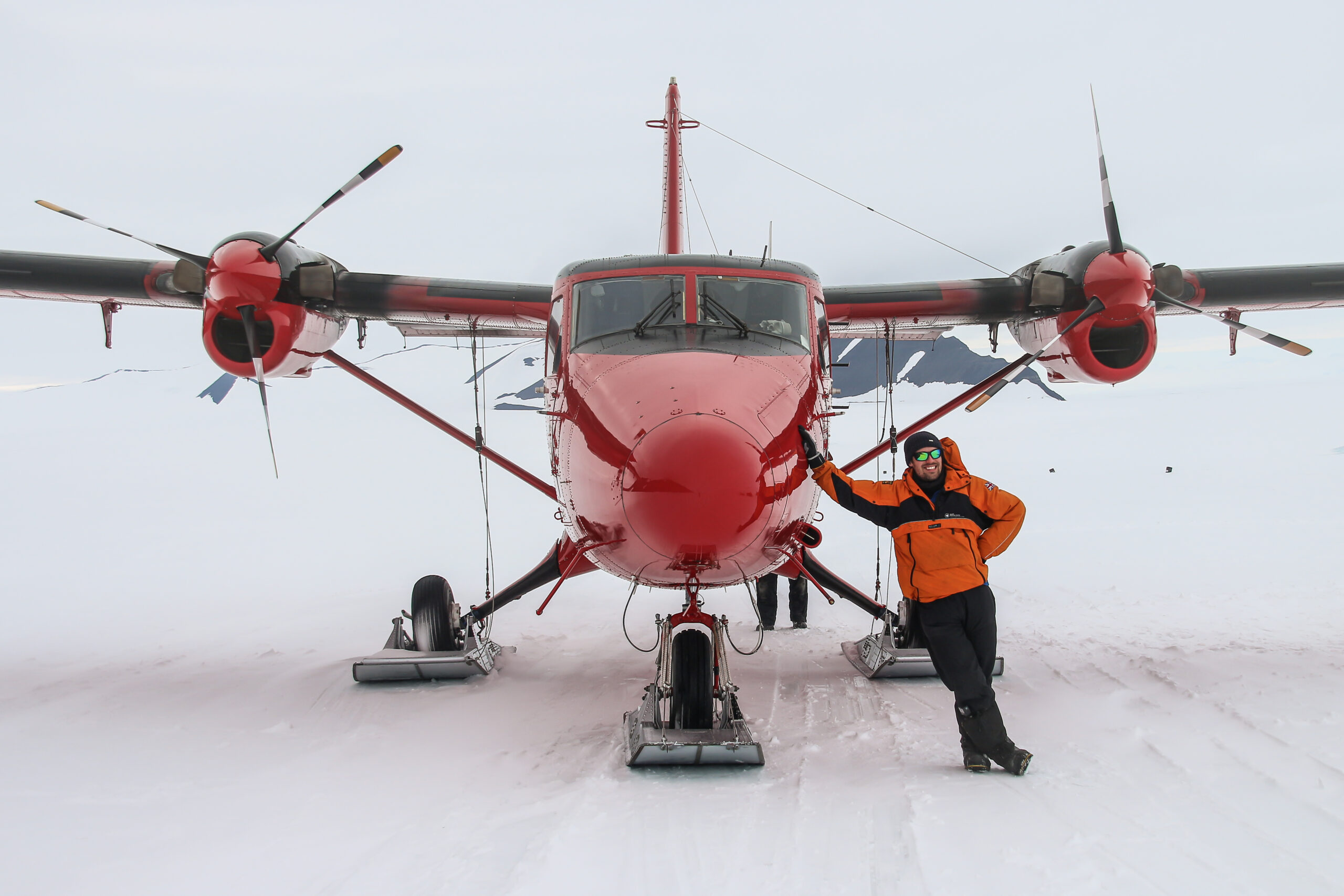
Matt with a Twin Otter at Fossil Bluff Field Station
What does a typical day look like for you?
I get up around 6.15am, open the Operations Tower and get a weather report from our field teams. We then have a briefing on the day’s weather and operational plan, and start flying from about 8.30am.
Most of the planes are back by 7 or 8pm, and we have a check in with our deep field teams to make sure they’re all OK, and tell the odd joke too!
How did you end up working in Antarctica?
My background was in Air Traffic Control – I was an Aerodrome and Radar Controller at a regional airport. I loved my job but I was mainly supporting people going on holiday, I didn’t feel like it served a bigger purpose. I applied to British Antarctic Survey because it brought together my love of aviation and my passion for science. I feel better in a job that has a bigger picture around it.
What’s the best thing you’ve seen while doing this job?
I’m lucky enough to have the best view on station. It’s quite surreal having airplanes flying around, penguins near the runway, icebergs drifting on by and whales feeding in the sea. One of the best things I’ve seen was a group of orcas wave-washing some seals off an iceberg. There are only a handful of orca capable of doing this, so it was really special to see this unique behaviour first hand.
What about a more challenging moment?
My most challenging moments have involved dealing with fairly complex emergency situations.
Moving from the old tower to the new one in the Discovery Building was a different kind of challenge. For a while we were running the old and new towers simultaneously, moving from a largely analogue system to a digital one. It needed a lot of thought and planning to keep operations running smoothly!
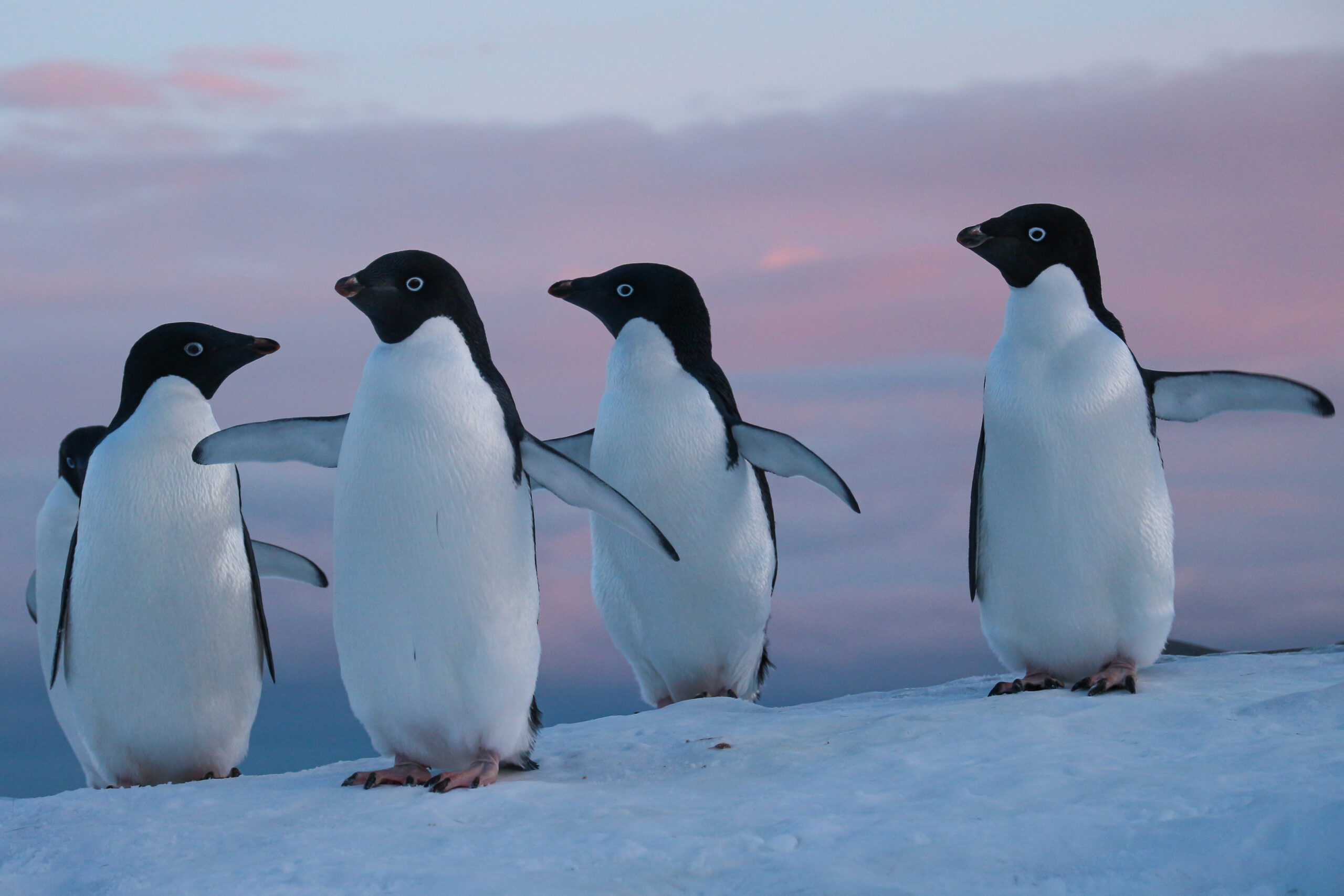
Adélie penguins
Who welcomes the first plane in to Rothera after the Antarctic winter season?
I don’t spend the winter in Antarctica so we train three of the wintering team to work in the Operations Tower and speak to the aircraft, so they can see the first flight in safely. I’m usually on the first plane in and the last plane out!
What’s one bucket list item you’d like to tick off in Antarctica?
Visiting Halley! It looks like a settlement on a faraway icy planet. It would be cool to go and live my fantasy of being an astronaut exploring a new planet!!!
What do you do when you’re not in Antarctica?
I work at our office in Cambridge during the Antarctic winter, but I usually spend some time exploring South America on the way back to the UK. I’ve explored most of Chile now, visiting the Andes and going to nerdy places like the European Southern Observatory. Once, some Antarctic friends and I took a motorhome across the USA and witnessed a total solar eclipse!
I’m also trying to improve my wildlife photography. Then it’s back to preparing for the next season.
Want to know more about our Operations Tower? Read this blog by Matt (and don’t be too jealous of his office view!)
